- Home
- Jules Verne
From the Earth to the Moon
From the Earth to the Moon Read online
JULES VERNE’s life was characterized by a love for the sea, travel, and adventure. He was born into a family with a seafaring tradition in Nantes, France, in 1828. At an early age he tried to run off and ship out as a cabin boy but was stopped and returned to his family. Verne was sent to Paris to study law, but once there, he quickly fell in love with the theater. He was soon writing plays and opera librettos, and his first play was produced in 1850. When he refused his father’s entreaties to return to Nantes and practice law, his allowance was cut off, and he was forced to make his living by selling stories and articles.
Verne combined his gift for exotic narratives with an interest in the latest scientific discoveries. He spent long hours in the Paris libraries studying geology, astronomy, and engineering. Soon he was turning out imaginative stories such as Five Weeks in a Balloon (1863) and Journey to the Center of the Earth (1864), which were immensely popular all over the world. After From the Earth to the Moon (1865), Verne received letters from travelers wishing to sign up for the next lunar expedition. His ability to envision the next stage in man’s technological process and his childlike wonder at the possibilities produced 20,000 Leagues Under the Sea (1870) and Michael Strogoff (1876). His biggest success came with Around the World in Eighty Days (1872).
Verne’s books made him famous and rich. In 1876 he bought a large steam yacht, outfitted with a cabin in which he could write more comfortably than on shore. He sailed from one European port to another and was lionized everywhere he went. His books were widely translated, dramatized, and later filmed. He died at Amiens in 1905.
FROM THE EARTH TO THE MOON
A Bantam Book
PUBLISHING HISTORY
From the Earth to the Moon was first published in 1865
Bantam Pathfinder edition published January 1967
Bantam Classic edition / June 1993
Bantam Classic reissue / October 2008
Published by Bantam Dell
A Division of Random House, Inc.
New York, New York
All rights reserved
Introduction copyright © 1993 by Abbenford Associates
Translation copyright © 1967 by Lowell Bair
Bantam Books and the rooster colophon are registered trademarks of Random House, Inc.
eISBN: 978-0-307-78516-9
www.bantamdell.com
v3.1
CONTENTS
Cover
About the Author
Title Page
Copyright
Introduction by Gregory Benford
CHAPTER 1
The Gun Club
CHAPTER 2
President Barbicane’s Announcement
CHAPTER 3
The Effect of Barbicane’s Announcement
CHAPTER 4
Reply from the Cambridge Observatory
CHAPTER 5
The Romance of the Moon
CHAPTER 6
What It Is Impossible Not to Know and
What It Is No Longer Permissible to Believe
in the United States
CHAPTER 7
The Hymn to the Projectile
CHAPTER 8
The Story of the Cannon
CHAPTER 9
The Question of Powder
CHAPTER 10
One Enemy Among Twenty-five Million Friends
CHAPTER 11
Florida and Texas
CHAPTER 12
Urbi Et Orbi
CHAPTER 13
Stone Hill
CHAPTER 14
Pick and Trowel
CHAPTER 15
The Festival of Casting
CHAPTER 16
The Cannon
CHAPTER 17
A Cablegram
CHAPTER 18
The Passenger on the Atlanta
CHAPTER 19
A Meeting
CHAPTER 20
Thrust and Counterthrust
CHAPTER 21
How a Frenchman Settles a Quarrel
CHAPTER 22
A New Citizen of the United States
CHAPTER 23
The Projectile Coach
CHAPTER 24
The Longs Peak Telescope
CHAPTER 25
Final Details
CHAPTER 26
Fire!
CHAPTER 27
Cloudy Weather
CHAPTER 28
A New Heavenly Body
INTRODUCTION:
THE EXACT DREAMER
WONDER—THAT is the key to understanding Jules Verne, the first novelist to claim excitement and awe as his territory. Because he wrote with a sure sense of the wonders that lay beyond everyday life, Verne was considered a children’s writer. But his work has outlasted vast numbers of “serious” novels about character and setting that are now mere historical curiosities.
We live in a time when the first expedition to the moon, in 1969, is a fading memory. Why, then, read about past visions of flying to the moon? After all, we know how it really happened—the ending is no surprise.
Verne’s answer would be, “Because the sense of possibility must be kept alive.” Unlike yesterday’s yellowing newspapers, the quality of wonder does not fade. Verne believed wonder to be an emotion that grows out of our sense of adventure and inspires us to reach our fullest potential. Though men have now traveled to the moon, the ideas and attitudes Jules Verne packed into From the Earth to the Moon are still alive today. And the novel even contains a prediction that may yet be fulfilled.
Verne invented modern science fiction. Others had written fantastic novels and stories using elements of science, such as Mary Shelley’s dark, brooding gothic novel, Frankenstein. But Jules Verne devised science fiction—stories with the scientific content in the foreground, as much a character as any person. More than any other figure of the nineteenth century, he saw the possibilities of the soaring century to come—and actually made things happen by igniting the imaginations of people everywhere.
For decades Verne was the best known of all French authors, valued not so much for his plots but for his ideas. He labored to infuse his novels with the feeling that these events could happen no matter how impossible they seemed at first glance. From the Earth to the Moon, first published in 1865, provides some excellent examples of this technique.
Verne had great faith in the growing potential of the still-young United States, and often predicted that it would lead the world in the following century. So when thinking about going to the moon, Verne picked the United States for his setting. “The Yankees, the world’s best mechanics, are engineers the way Italians are musicians and Germans are metaphysicians: by birth.” He wrote the book while the bloodiest battles of the Civil War still raged, yet was able to look beyond the ongoing American agony and envision a postwar future.
The members of the fictional Baltimore Gun Club are restless for activity. Its leader, the man with a grand idea—a typical Verne hero—is an anomaly at the Gun Club: “all his limbs were intact.” The image of hobbled veterans making a huge leap to another world is Verne’s way of showing how limitations can be overcome—by work, will, and wonder. His Gun Club dreamers, aware of the latest scientific developments, know that the mathematician Carl Gauss has already proposed signaling to possible inhabitants of the moon and Mars by building giant stone triangles on the earth that could be seen from a vast distance. But mere signals would not be enough for Verne’s heroes, who feel in their bones that by dreaming as exactly—as precisely and scientifically—as possible, they can live up to the full possibilities of their lives. This basic theme lights up over a hundred of his “extraordinary voyage” novels.
But the members of the Baltimore Gun Club aren’t the usual
run of aimless, romantic nineteenth-century dreamers. Verne’s men—this was long before women aspired to such things—are relentlessly practical. Early on they consider a story by Edgar Allan Poe (a writer Verne admired) in which a man floats to the moon in “a balloon filled with a gas drawn from nitrogen and thirty-seven times lighter than hydrogen.” This is an insider’s joke. Nitrogen, the most plentiful gas in our own atmosphere, is already far heavier than hydrogen. Nobody could “extract” a lighter gas from it without breaking up the atoms—and still it would be heavier than hydrogen.
Here and elsewhere Verne mocks his era’s great interest in balloon sailing to the planets. It is now hard to comprehend that most people of that time had no idea what “outer space” meant. To them, balloons—which had just begun to be used to fly—were a logical way to travel to the crescent they could plainly see waiting in the sky. They never doubted that there would be air available throughout such a journey—wasn’t there plenty of it here? Balloons rise because they contain gases lighter than air. Few popular writers realized that because space is a vacuum, this doesn’t work.
In 1865 there were five other books on interplanetary themes published in French, including Voyage to Venus, An Inhabitant of the Planet Mars, Voyage to the Moon, and even a survey by an astronomer, Imaginary Moons and Real Moons. All featured balloons. One writer did have a dim idea of using rockets, but his squirted water out the end, not fiery gas. Then he ruined the effect by thriftily collecting and reusing the ejected water. Common sense should have told him that such a ship would gain no momentum: The water’s push would be canceled when the water was caught. (The recycling squirter idea seems to have had a lingering appeal; it was proposed as late as 1927 by an engineer.)
Verne made fun of the invention, saying that his own launch mechanism, a cannon, would certainly work. No suspicious mechanics for him! He stuck with engineering he knew would work—artillery, the workhorse of battle. The story proceeds with an engineer’s relish for the details, the numbers, the tug of technical arguments. Verne checked his calculations with experts. When the numbers told him that the shell of a capsule would be impossibly heavy if made of iron, he decided to use aluminum, which then was rare and costly, unheard of as a construction material. (One wonders what he would have thought of our soft-drink cans.) This was Verne’s secret—showing the wonder lurking behind the mask of gritty particulars.
He used this same method to invent many of the amazing details that now strike us as so prescient. Since the United States was the most likely nation to undertake so bold a venture, where would his veterans place the cannon? Verne describes attaining the right “plane of the ecliptic,” which is a reasonable motivation but sidesteps the more detailed logic behind his choice of launch site. He knew that to artillery gunners, the earth’s rotation is important in predicting where a shell will land—while it is in flight, the land moves beneath it. In aiming for the moon, there’s an even bigger effect. Think of the earth as a huge merry-go-round. If you stand at the north pole, the earth spins under your feet but you don’t move at all. Stand on the equator, though, and the earth swings you around at a speed of about a thousand miles an hour. You don’t feel it because the air is moving too.
But that speed matters a lot if you’re aiming to leap into orbit. Verne had the crucial idea right—that escape velocity is the key to getting away from the earth’s gravitational pull. The added boost from the earth’s rotation led him to believe that the American adventurers would seek a spot as close to the equator as possible, while still keeping within their national territory. A glance at the map told him that the obvious sites were in Texas and Florida.
This is exactly what happened in the American space program nearly a century later, when the launch site of the Apollo program became a political football between Texas and Florida. Florida won, as Verne predicted, but not for political reasons. NASA engineers wanted their rocket stages to fall harmlessly into the ocean. Verne picked Stone Hill, on almost the exact latitude as Cape Kennedy, the Apollo launch site.
Similarly, he correctly foretold the shape of the capsule, the number of astronauts (three), weightlessness in space, a splashdown at sea picked up by the American Navy, and even the use of rockets to change orbit and return to earth. These last three details come from the book’s sequel, Around the Moon, which Verne published five years after From the Earth to the Moon. It takes up the voyage itself, which swings around the moon and returns. There are errors, too, such as a scene in which the astronauts simply open a window on what should have been a vacuum and toss out a dead dog.
The biggest error in Verne’s calculations is the cannon itself. At the acceleration needed to reach the earth’s escape velocity of seven miles per second, the force would have smeared the hearty astronauts into a thin, bloody paste. Verne always tended to minimize problems in dynamics. He felt that by the time engineers could build his imaginary machines, they would have a lot of new tricks up their sleeves. These would make matters easier than they seemed in Verne’s own time. In this he was right—a true moon-rocket launch imposes only a few times the earth’s gravitational acceleration (“gees”) on the passengers.
Nevertheless, his moon-launching cannon is an embarrassment. Verne’s adventurers would have been squashed. He gives them some help with a water shock absorber, and discusses it in detail. But he must have known that it would not have helped much.
It is a bit curious why Verne chose this brute-force method when the rocket was known to him—though only as a minor military weapon and as fireworks. When he wrote Around the Moon, he showed that he indeed understood the principles of rocketry, since he let his capsule fire several to propel it back to earth. Verne probably wanted the luscious specifics of artillery to light up his story—to ground it in reality. People knew that cannons worked with awful efficiency. Rockets would have seemed to his audience rather odd, speculative, and unlikely.
Then again, maybe Verne was not so far wrong about artillery and outer space—only he saw further into the future than our time. Although rockets opened the space frontier, through the inventions of the American Robert Goddard (an ardent Verne fan), cannons are making a comeback.
In 1991 the U.S. government began a research program aiming to deliver payloads into orbit around the earth at a low price—by using guns. The barrel, reinforced by steel and concrete, is a narrow pipe about three hundred feet long. An explosion starts the process, driving hydrogen gas against the underside of a bullet-shaped capsule. The goal is to place a capsule in orbit within three years. Once there, it will use rockets to maneuver itself into a proper, nearly circular orbit about the earth—just as Verne predicted.
Why now, nearly 130 years after From the Earth to the Moon, are we finally exploring the full potential of industrial-age technology? The trick is that only computer-age engineering can deal with the massive acceleration—thousands of times the earth’s “gee.” We now know how to make tiny circuits in rock-solid silicon. We have rockets with hard-packed chemical fuel.
Nothing in the capsule will be free to break loose and smash into the rest of the extremely compact “spaceship.” Its instruments will be fitted together at extremely fine tolerances, with not a hairbreadth of misalignment or wasted space. This is so that the engineers can pack into a few pounds the capability to look down and monitor the earth’s environment, take readings of the conditions in orbit, and even gaze outward through fine-ground lenses to study other worlds. Such capability must be crammed into a short tube that can pass through a narrow barrel about an inch wide.
With further engineering it seems possible to send these solid ambassadors to probe other planets, and the moon too. They would be much cheaper than present spacecraft. Firing them into orbit (with a huge bang that would have gratified Verne) will cost about one percent of the price of putting a pound in orbit using our present shuttle craft.
One of the book’s chapter titles, “The Hymn to the Projectile,” is almost a parody of Verne’s reverence for t
echnology. His J. T. Maston rhapsodizes, “Would you like figures? I’ll give you some eloquent ones!”—and reels off the specifications on gunpowder and mass, a poetry of arithmetic unique to Verne. He reasoned that people can be convinced of the reality of a possibility only if it is described with great specificity. His characters are masters of geometry: “Here and there he wrote a pi or an x2. He even appeared to extract a certain cube root with the greatest of ease.”
They know their guns too. Their huge construction “will be a cannon, since its chamber will have the same diameter as its bore; it will be a howitzer, since it will fire a hollow shell; and it will be a mortar, since it will be elevated at an angle of ninety degrees …” One of the best ways to convince your readers that you are a reliable narrator is to tell them something about their own world—such as the distinctions between types of artillery—that they didn’t know before. (Verne handed this strategy down to the countless authors of today who tell us how hotels, airports, battleships, hospitals, or law firms work, all in relentless, telling detail.)
This isn’t merely Verne’s enthusiasm overpowering his story. Rather, it marks the birth of “hard” science fiction, the variety that stays loyal to the facts, as nearly as the author knows them. Hard sf also describes the way engineers and scientists actually work: no lonely experimenters on mountaintops, inventing Frankensteins out of dead body parts; no easy improvising to get around tough problems—Verne’s tinkerers work in groups, argue, make hard choices. Audiences of his time found such detail gripping and convincing.
Writers such as Arthur C. Clarke (2001: A Space Odyssey), Robert A. Heinlein, and the other master sf writer of the nineteenth century, H. G. Wells, followed in this tradition. Verne influenced even those who didn’t quite know who he was. Isaac Asimov once told me that when he was still a young science fiction fan he found himself listening to a lecture about a great foreign writer, a master of fantastic literature. But Asimov couldn’t recognize the name. Giving the French pronunciation, the lecturer said, “Surely you must know Zueel Pfern,” and described From the Earth to the Moon. Asimov replied in his Brooklyn accent, “Oh, you mean Jewels Voine!”

 Michael Strogoff; Or the Courier of the Czar: A Literary Classic
Michael Strogoff; Or the Courier of the Czar: A Literary Classic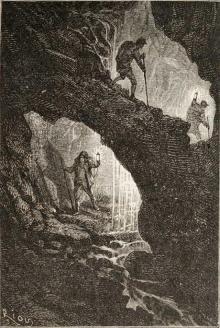 Voyage au centre de la terre. English
Voyage au centre de la terre. English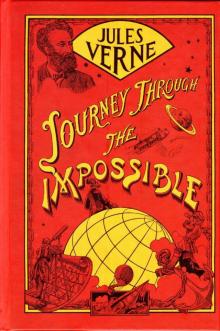 Journey Through the Impossible
Journey Through the Impossible The Castaways of the Flag
The Castaways of the Flag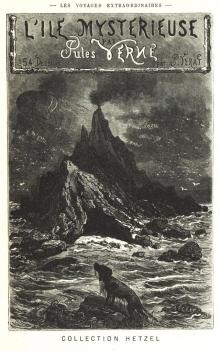 L'île mystérieuse. English
L'île mystérieuse. English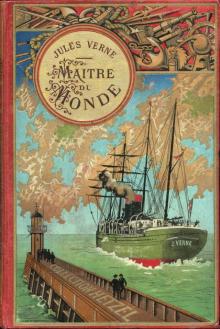 Maître du monde. English
Maître du monde. English Around the World in Eighty Days
Around the World in Eighty Days A Voyage in a Balloon
A Voyage in a Balloon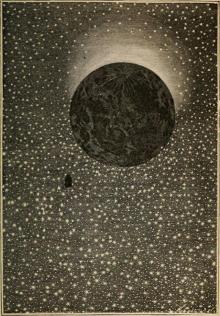 From the Earth to the Moon, Direct in Ninety-Seven Hours and Twenty Minutes: and a Trip Round It
From the Earth to the Moon, Direct in Ninety-Seven Hours and Twenty Minutes: and a Trip Round It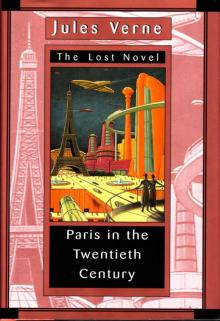 Paris in the Twentieth Century
Paris in the Twentieth Century City in the Sahara - Barsac Mission 02
City in the Sahara - Barsac Mission 02 The English at the North Pole
The English at the North Pole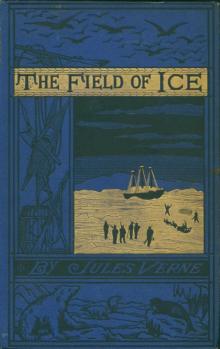 The Field of Ice
The Field of Ice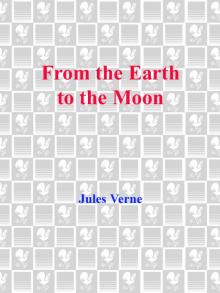 From the Earth to the Moon
From the Earth to the Moon Un capitaine de quinze ans. English
Un capitaine de quinze ans. English The Mysterious Island
The Mysterious Island Les indes-noirs. English
Les indes-noirs. English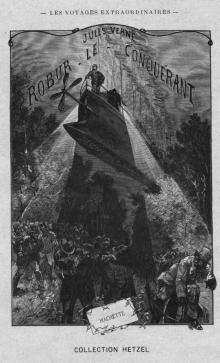 Robur-le-conquerant. English
Robur-le-conquerant. English Propeller Island
Propeller Island Around the World in Eighty Days. Junior Deluxe Edition
Around the World in Eighty Days. Junior Deluxe Edition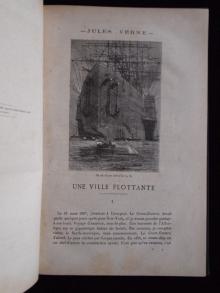 Les forceurs de blocus. English
Les forceurs de blocus. English In the Year 2889
In the Year 2889 Journey to the Centre of the Earth
Journey to the Centre of the Earth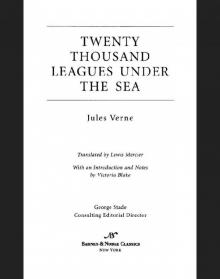 Twenty Thousand Leagues Under the Sea
Twenty Thousand Leagues Under the Sea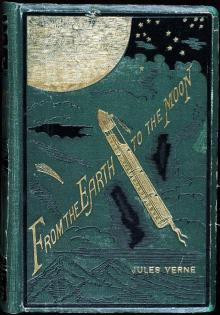 From the Earth to the Moon; and, Round the Moon
From the Earth to the Moon; and, Round the Moon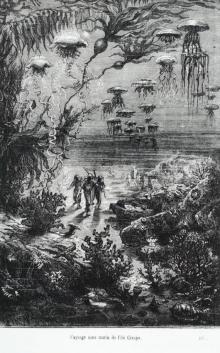 Vingt mille lieues sous les mers. English
Vingt mille lieues sous les mers. English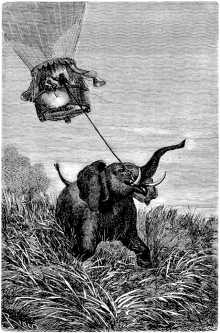 Cinq semaines en ballon. English
Cinq semaines en ballon. English Twenty Thousand Leagues under the Seas
Twenty Thousand Leagues under the Seas Face au drapeau. English
Face au drapeau. English Michael Strogoff; Or, The Courier of the Czar
Michael Strogoff; Or, The Courier of the Czar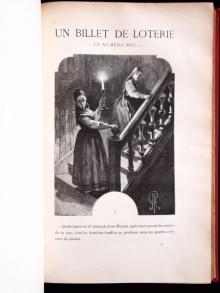 Un billet de loterie. English
Un billet de loterie. English The Secret of the Island
The Secret of the Island Off on a Comet! a Journey through Planetary Space
Off on a Comet! a Journey through Planetary Space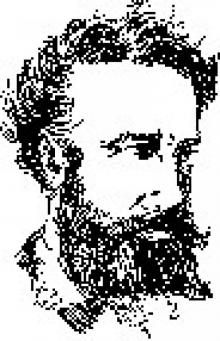 Into the Niger Bend: Barsac Mission, Part 1
Into the Niger Bend: Barsac Mission, Part 1 All Around the Moon
All Around the Moon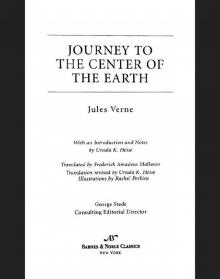 A Journey to the Center of the Earth - Jules Verne: Annotated
A Journey to the Center of the Earth - Jules Verne: Annotated 20000 Lieues sous les mers Part 2
20000 Lieues sous les mers Part 2 Robur-le-Conquerant
Robur-le-Conquerant Les Index Noires
Les Index Noires Michael Strogoff; or the Courier of the Czar
Michael Strogoff; or the Courier of the Czar 20000 Lieues sous les mers Part 1
20000 Lieues sous les mers Part 1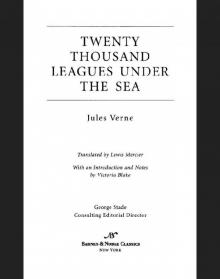 Twenty Thousand Leagues Under the Sea (Barnes & Noble Classics Series)
Twenty Thousand Leagues Under the Sea (Barnes & Noble Classics Series) Five Weeks In A Balloon
Five Weeks In A Balloon Journey to the Center of the Earth
Journey to the Center of the Earth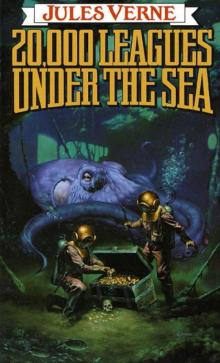 20,000 Leagues Under the Sea
20,000 Leagues Under the Sea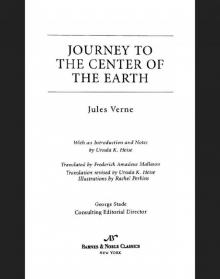 Journey to the Center of the Earth (Barnes & Noble Classics Series)
Journey to the Center of the Earth (Barnes & Noble Classics Series) Adrift in the Pacific-Two Years Holiday
Adrift in the Pacific-Two Years Holiday The Collected Works of Jules Verne: 36 Novels and Short Stories (Unexpurgated Edition) (Halcyon Classics)
The Collected Works of Jules Verne: 36 Novels and Short Stories (Unexpurgated Edition) (Halcyon Classics) The Survivors of the Chancellor
The Survivors of the Chancellor Their Island Home
Their Island Home Le Chateau des Carpathes
Le Chateau des Carpathes Les Cinq Cents Millions de la Begum
Les Cinq Cents Millions de la Begum The Floating Island
The Floating Island Cinq Semaines En Ballon
Cinq Semaines En Ballon Autour de la Lune
Autour de la Lune